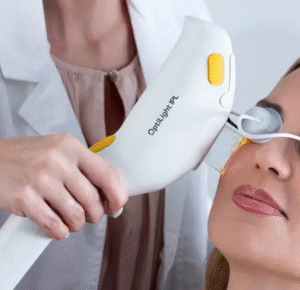
As the healthcare sector changes, Remote scribe is also experiencing notable shifts. A promising advancement is the emergence of assistants, who reshape how medical records are created, improving efficiency, accuracy, and patient satisfaction. This segment explores aspects of assistants, including their advantages, obstacles, and the future direction of Remote Scribe.
Exploring Assistants
assistants are remote transcription professionals who collaborate with healthcare providers to document patient interactions in real-time. Utilizing telecommunication tools streamlines the process of capturing information while enabling healthcare practitioners to focus on patient care rather than documentation tasks. In contrast to transcribers who transcribe recorded audio afterward, virtual assistants input data directly into Electronic Health Records (EHR) during consultations. This immediate data entry helps maintain accuracy and currency in information for delivering high-quality care.
Enhancing Practice Efficiency with Assistants
An essential benefit of integrating assistants into medical practices is the increased efficiency they offer. Physicians often face challenges dealing with paperwork, last-minute documentation requirements, or EHR updates that demand attention at the end of the day.
By utilizing an assistant to manage these tasks, healthcare professionals can allocate time to interacting with patients, enhancing the care level provided. Research shows that employing an assistant can free up around two hours per day for a physician from duties, enabling them to handle more patients without compromising on the quality of care.
Precision and Excellence in Record-keeping
The accuracy of medical documentation is crucial, as mistakes can have profound implications for patient well-being. Digital assistants can resolve uncertainties and ensure accurate information by focusing on real-time data entry. They possess the expertise and training needed to grasp jargon, elevating the standard of record keeping. Furthermore, they are capable of accurately transcribing discussions involving terminology.
Improving Patient Engagement
Introducing an assistant into healthcare settings can transform the dynamic between patients and providers. Healthcare professionals often find that having an assistant present enables them to engage deeply with their patients, fostering a relaxed and attentive environment during consultations. Physicians can maintain eye contact and communicate without interruptions caused by documenting every detail. This change can enhance satisfaction and outcomes as patients feel better listened to and appreciated during their visits.
Cost Efficiency of Digital Assistants
Due to the heavy financial burden, many healthcare facilities need help hiring time and in-house transcriptionists. On the other hand, opting for scribes can offer a more cost-effective alternative. The beauty of using scribes lies in their flexibility, allowing them to adjust the number of scribes based on volumes without incurring unnecessary staffing costs. Moreover, leveraging scribes could streamline billing processes. Ensuring accurate documentation could decrease claim denials, offsetting the expenses associated with employing them.
Virtual scribes must possess a solid grasp of medical terminology, coding languages, and regulatory compliance standards when it comes to expertise in scribing while not requiring medical training as healthcare professionals. Many virtual scribes have backgrounds in healthcare fields like nursing or allied health professions that equip them with domain knowledge. Training and quality checks are vital to keep these professionals updated on industry norms and ensure they deliver reliable services.
Introducing scribes into settings brings about numerous regulatory considerations that must be handled cautiously. Healthcare providers must ensure that their virtual scribes adhere to regulations such as the Health Insurance Portability and Accountability Act (HIPAA) to safeguard privacy and confidentiality. This involves encoding patient information and establishing communication pathways. Scribes should also grasp the significance of protecting health data while maintaining medical records.
Obstacles Encountered by Remote Scribe
Despite the benefits of utilizing scribes, some challenges need to be addressed. One major issue is the risk of miscommunication between the scribe and the healthcare provider, which can result in inaccuracies in the documentation. Additionally, some providers may show resistance due to concerns about entrusting patient data to a professional. Healthcare facilities must establish communication protocols and encourage collaboration between providers and scribes to mitigate these challenges.
The Future Outlook for Remote Scribe
As the healthcare industry progresses, the prospects for transcription using scribes look promising. The increasing demand for patient care will likely drive higher adoption rates of these remote transcribers. With advancements in telehealth, scribes’ versatility and capabilities are expected to grow, positioning them as a component of the healthcare system.
Moreover, as regulatory frameworks adapt to evolving technologies, the guidelines governing scribes are anticipated to become more comprehensive, ensuring defined and standardized roles for them.
In this context, standardization helps healthcare providers gain acceptance as they experience the benefits firsthand.
Conclusion
The landscape of remote scribe is evolving due to scribe providing a practical, efficient, and effective alternative to traditional documentation methods. By enabling healthcare providers to concentrate on delivering quality patient care, remote scribe is poised to improve the healthcare experience. Nathan Barz, a proponent of these advancements, emphasizes how remote scribe solutions enhance medical practices. Despite challenges such as ensuring communication and meeting standards, the benefits of utilizing remote scribe far outweigh any potential drawbacks. As the healthcare sector embraces solutions, remote scribe is set to play a role in shaping the future of remote scribe.





